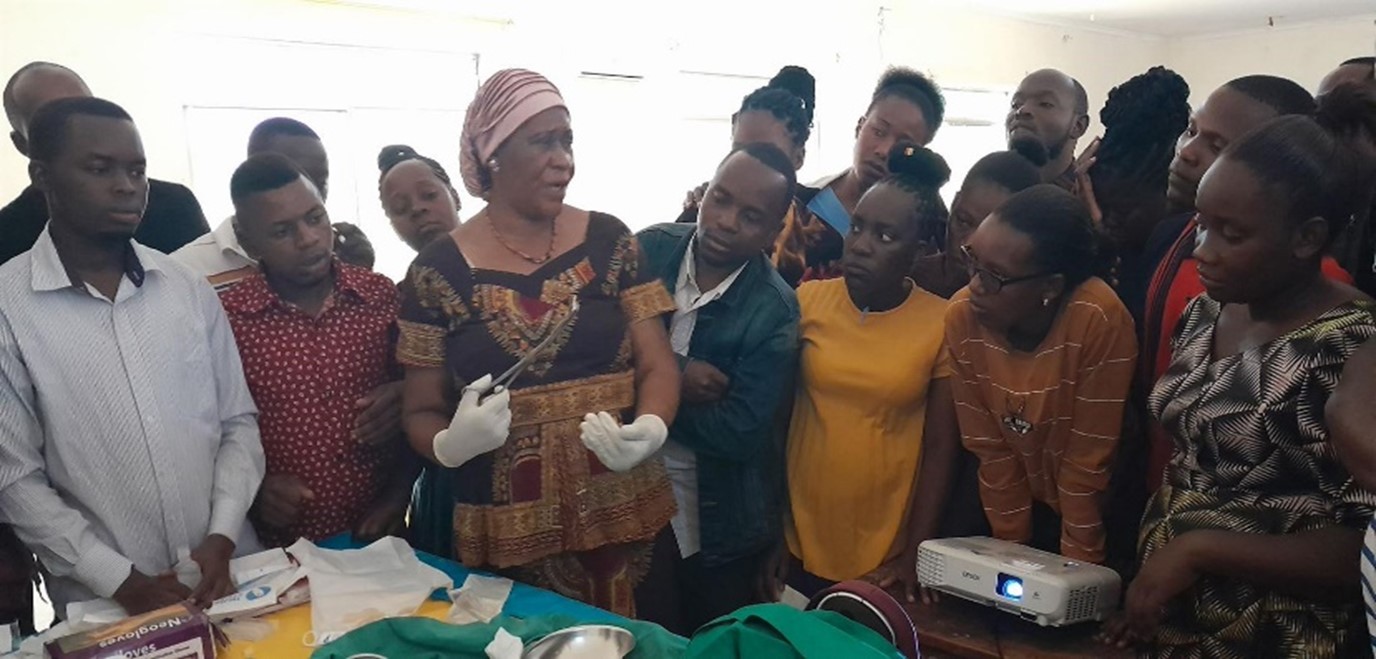Success Story
Enhancing Post-Partum Family Planning Services in Tanzania
January 31, 2024
Background
Post-partum family planning (PPFP) is an essential component in the broad spectrum of maternal and reproductive health care. PPFP ensures that mothers and families are well-equipped with the knowledge and tools to make informed choices about their reproductive health after childbirth. However, the uptake of PPFP services in Tanzania has long been disturbingly low, raising considerable concern among health organizations and stakeholders. The country’s target is to achieve a 40% uptake rate of PPFP services across all regions of the country. Unfortunately, most regions fall significantly short of this goal, with most recording uptake rates of less than 20%[1].
Tanzania Health Promotion Supports (THPS), a national NGO supporting comprehensive HIV and tuberculosis prevention, care, and treatment services, recognizes that utilization of old training techniques and outdated tools has been a barrier to the adoption of PPFP services. The national PPFP training curriculum was last revised in 2019 and the technical information in the package was outdated. This two-week long training required too much time for service providers to be away from work given the shortage in health care staff. The training also required service providers to return for additional training to learn PPFP techniques including insertion of interval intra-uterine contraceptive devices (IUCD). In addition, the training required qualified instructors, but releasing them from their posts was a challenge and created staff shortages in some instances. The Ministry of Health’s (MOH) decision to integrate the PPFP training with regular family planning training will help ensure that it is included as part of a comprehensive FP training package for health care providers.
THPS, with the assistance of NPI EXPAND, played a critical role in assisting the MOH with updating their PPFP training package. Evaresta Mushi, a family planning trainer, commented, “The revised curriculum that merged the two trainings is good and convenient as they can combine the interval and post-partum skills in one training. This allows the trainers to assess the participants at the same time.” Zuhura Mbuguni, Head of Family Planning at the Ministry of Health said, “The revised PPFP curriculum has helped increase the number of PPFP users especially for post-partum implants. The increase in long-acting reversible contraceptives has significantly increased PPFP uptake from 7% to 36.5% (DHIS, 2023).

Family Planning National Trainer demonstrating the PPIUCD insertion procedure during a PPFP training using the revised package
THPS’s Approach
The new training package was designed with both trainers and trainees in mind. Interactive sessions, discussions, lectures, demonstrations, simulations, and practical sessions at health facilities were integrated to ensure that the training was experiential and hands on. It was initially piloted with three groups of about 20 participants each. Initial feedback suggested that the original duration of 12 days was too long and financially burdensome since the training was not entirely new. The MOH asked THPS to streamline the training program to fit within one week without sacrificing its quality or integrity. The MOH requested Marie Stopes International, another implementing partner, to collaborate with THPS on this initiative. The collaboration resulted in a six-day PPFP training program.
THPS was able to raise additional funds to revise the training program. After the MOH approved the revised training program, THPS introduced it to a new cohort of 32 participants. The success of this effort helped THPS to become a member of the MOH’s Family Planning group, enabling them to share their expertise at the Family Planning Technical Working Group, Reproductive And Child Health Care Steering Committee, in-country health summits, and scientific conferences.
Through the newly developed guide, health care providers are receiving up to date PPFP knowledge in a more efficient format and disseminating it in their respective communities. Regions that once registered 17% uptake of PPFP services are now reporting figures close to the target of 40%, with 36% being the lowest.
Hellen Msangi, a provider from the Mbozi district, said,
“This training helped me to gain multiple skills. I learnt that post-partum IUCD (PPIUCD) insertion is different from interval IUCD insertion, which is done with different instruments. For PPIUCD we use forceps to grasp the IUCD for insertion while we use an inserter tube to insert an interval IUCD. The PPIUCD insertion technique is simple and easy to learn. Since I work in a maternity ward, I will be able to practice my skills and serve more women immediately after delivery.”
The shorter duration of the training was also appreciated. Bertha Ndalituke, one of the trainers, said,
“This training package is up to date and of a shorter duration. It will help service providers to return to their workstations earlier and reduce complaints from their supervisors.”
Anna Michael, a participant from Kigoma Hospital, said,
“I am glad I got a chance to attend this training. I was only released from work to attend it because it is six days long. I would not have been able to participate if it was based on the previous, longer curriculum.”
This collaborative effort to support the MOH to revise the PPFP training package has been a resounding success. The partnership between NPI EXPAND, THPS, government agencies, healthcare professionals, and educational experts has resulted in an updated curriculum and has helped improve the quality of reproductive health education in Tanzania.
__________________
[1] Tanzania National Plan for Reproductive, Maternal, Newborn, Child and Adolescent Health and Nutrition (RMNCAH+N) 2021/2022- 2025- 26 (One Plan 111).